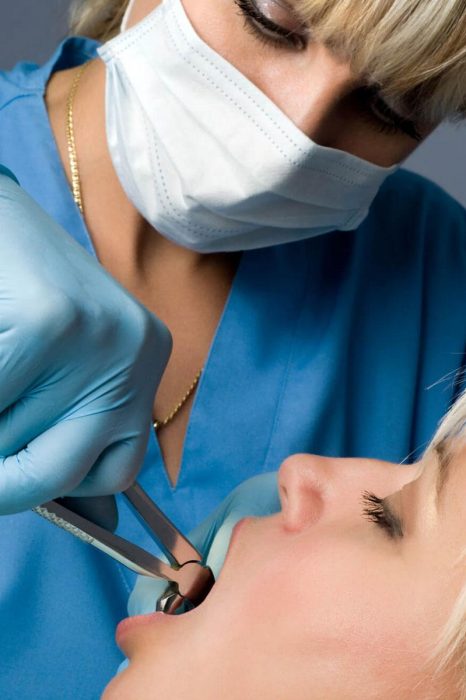Tooth Extractions in Dubai

When is it advised to have a tooth extraction?
A dental operation called a tooth extraction involves entirely removing your tooth from its socket. This is sometimes referred to as “pulling” a tooth. The full removal of one or more teeth from the mouth is referred to as a tooth extraction. A dental surgeon will often undertake this operation. Milk teeth can be naturally removed from a child’s mouth without the help of a dentist as they erupt to make space for permanent teeth.
When feasible, healthcare professionals prefer to preserve natural teeth. However, there are situations when additional restorative measures, like dental crowns or fillings, are required. If your tooth has suffered severe damage that cannot be repaired, removal may be required.
Having your teeth extracted may be advised by your dentist if you:
- Serious dental decay (cavities).
- a broken tooth.
- a damaged tooth.
- packed teeth.
- a severe gum condition.
- tooth luxation or other harm to the teeth.
What are the causes of tooth removal?
- Teeth that have been severely damaged by tooth decay or periodontal disease and cannot be fixed with a dental crown, filling, or root canal.
- A fractured or damaged tooth that cannot be fixed due to trauma or injury.
- Malocclusion, or crowding of teeth, has weakened the tooth root due to a dental or gum abscess.
- Impaction of teeth, most frequently the wisdom teeth, which has prevented the tooth from emerging from the gum.
What is the procedure for tooth extraction?
Your afflicted tooth and the gums around it will be examined by your dentist. Additionally, your dentist will take dental X-rays to assess the level of the bone and the severity of the damage. Tell your dentist about any prescription drugs, over-the-counter remedies, and vitamins you take. The alternatives for treatment and sedation will be thoroughly discussed with you after all the necessary data has been acquired.
Once the treatment is finished, your dentist will cover the extraction site with a piece of cotton and instruct you to apply firm, consistent pressure. By doing so, the bleeding is slowed and a blood clot can form. (Clotting is a typical part of healing. It encourages healing and lowers the chance of developing dry sockets.) Once the bleeding has sufficiently subsided, you can remove the gauze. Throughout the first 24 hours, you can continue to experience minor bleeding.
